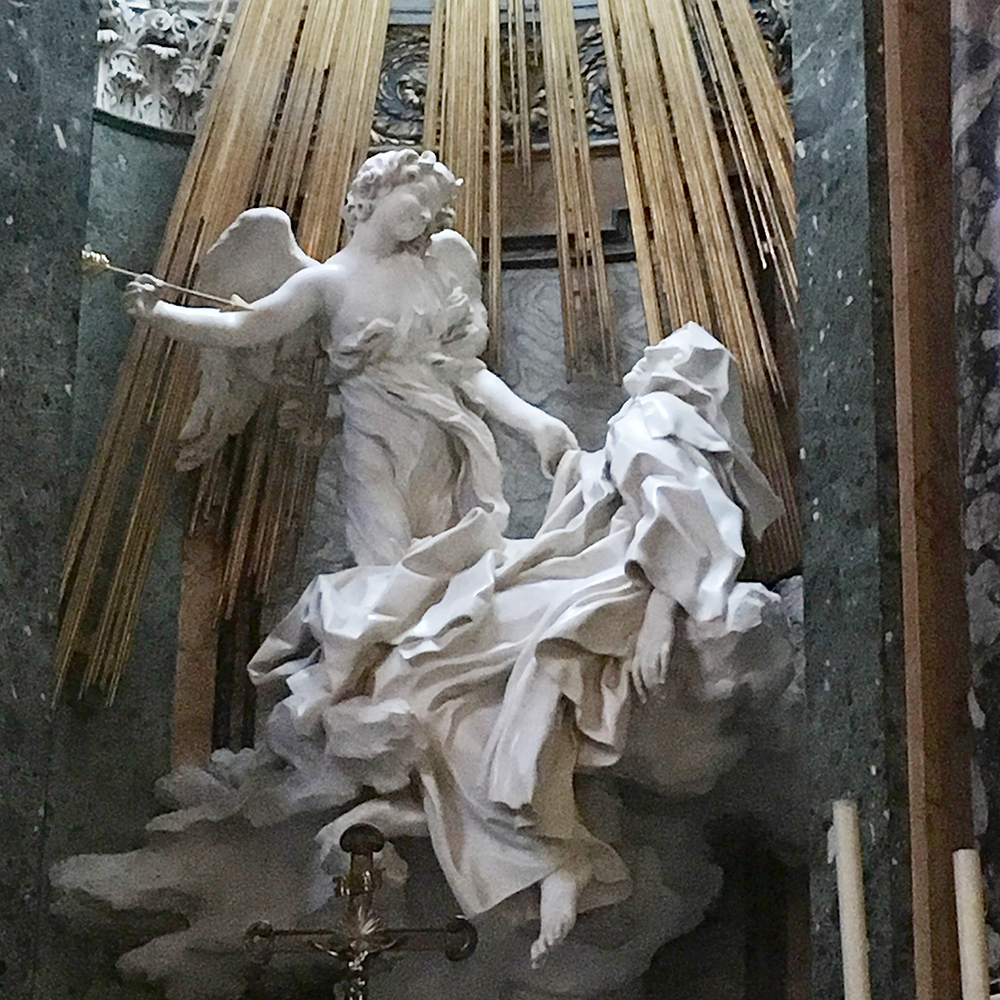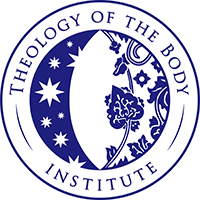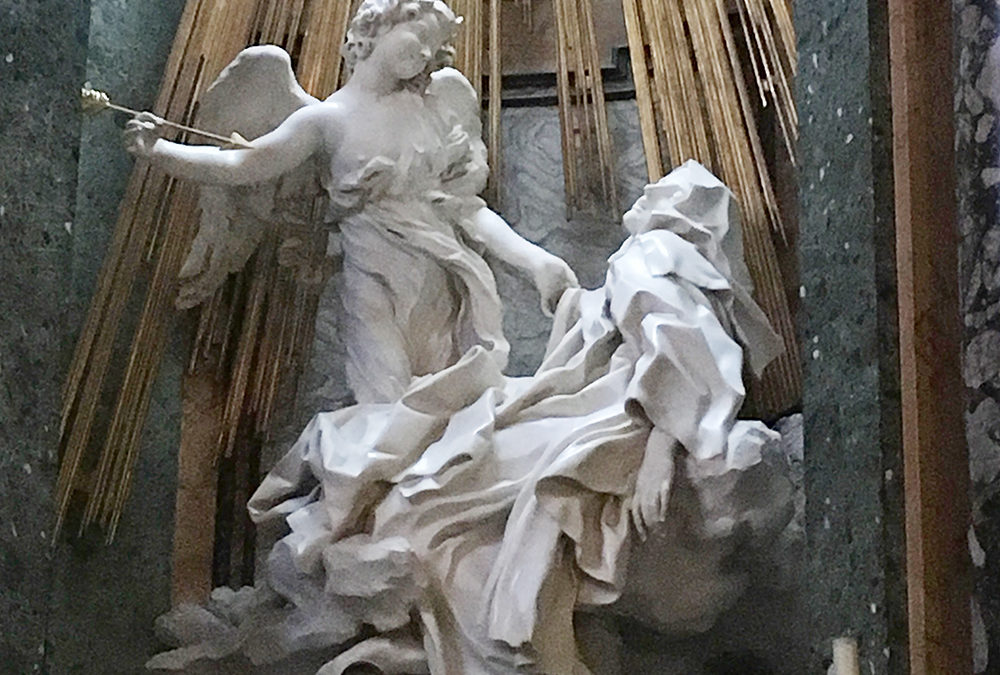

Surprised by the Joy of the Lord
Surprised by the Joy of the Lord

An excerpt from The Heart of Perfection: How the Saints Taught Me to Trade My Dream of Perfect for God’s
by Colleen Carroll Campbell
It’s a funny thing about the joy of the Lord: He wants us to fling our hearts wide open to Him. But some days all we can manage is a hairline crack. And He’s willing to use even that to surprise us with His joy when we least expect or deserve it.
I was reminded of that truth a couple of years ago when my family and I were visiting the hometown of Teresa of Ávila, a favorite saint of mine who was also a favorite of Francis and Angélique. The University of Ávila had invited me to keynote an international conference on Teresa to coincide with the five-hundredth anniversary of her birth. My first answer had been a reluctant no—how could I leave four preschool-aged children at home to travel to Spain?—but when the university found a sponsor to pay for John and the kids to join me, I happily reconsidered.
John and I had seen Ávila years earlier, but only for a few hours on a whirlwind trip, so we relished the opportunity to return with our children. I was eager to take a closer look at sights I had barely glimpsed the first time around, especially the dazzling, gold-bedecked Chapel of the Transverberation, where Teresa experienced a bittersweet rapture in which she felt her heart pierced with the flaming sword of God’s love. This “caressing of love so sweet,” as Teresa described it, was such a pivotal moment in her life and the life of her Carmelite order that it claimed its own feast day and inspired Gian Lorenzo Bernini’s breathtaking sculpture, The Ecstasy of Saint Teresa.
Ever since I first saw that sculpture in Rome in my early twenties, I had wanted to spend some quality time in the chapel where Teresa tasted such joy. Seventeen years and four kids later, I got my chance.
We arrived in Ávila in late July 2015 and spent more than a week exploring every nook and cranny of that beautiful medieval city. We ate in its cafés, scampered across its plazas and playgrounds, and walked on top of its historic walls. We saw a lot of Teresa—her birthplace, her parish church, her monasteries, even her ring finger, severed after her death and displayed to the fascination of my five-year-old twins. And near the end of our stay, after I had delivered my big speech, we trekked down to the Monastery of the Incarnation to see the Chapel of the Transverberation.
It was supposed to be an easy jaunt; that’s how I remembered it from before. But nothing is easy when you’re traveling with four children ages five and under. Especially when you’re jet-lagged and you’ve spent a week sleeping on a too-short twin bed without air-conditioning. In the middle of a heat wave. In a town where everyone else is waking up from siesta just as your family is settling in for dinner and a good night’s sleep.
We were tired and cranky by the time we stepped across the threshold of Teresa’s monastery that afternoon, our shirts drenched with sweat and our cheeks pink from the scorching Castilian sun. My husband and I had been taking turns toting our eighteen-month-old son through Ávila’s stroller-unfriendly cobblestone streets for nearly a week by that point, and both our backs ached. I had that dull headache I always get after a major speech, no matter how well it goes. I was looking forward to slumping into a back pew and soaking up the chapel’s beauty in silence.
Then I heard the music. And my heart sank.
It was singing and strumming—jubilant and loud, very loud. We turned the corner to the chapel and found a throng of Spanish young adults crooning and swaying through a particularly boisterous charismatic Mass. My children were intrigued. I might have been, too, had I gotten more sleep. Instead, I was annoyed. My interior rant began.
Why do these people have to take over the chapel with a kooky liturgy on the one day we come to visit? Do they even know what this place is? Guess we’ll just have to wait until they’re through. It’s a shame there’s so little reverence in European churches nowadays.
We spent the next hour meandering through the monastery and its museum. When it was ready to close, we returned to the chapel.
The youth Mass was still going. Only now, they weren’t just rocking it out in song. They were dancing: arms linked, heads bobbing, legs kicking in the air as they circled the perimeter of the chapel where I had hoped to pray in peace.
Oh, for Pete’s sake. How long is this going to last?
I was debating whether to snap a few photos of the chapel’s altar or just flee when some young women in the group began motioning for us to join in. I tried to beg off, mixing mangled Spanish with some backward steps and apologetic smiles. They paid no heed. They just kept dancing and stretching their hands toward us, opening a space in their circle that they wanted us to fill.
I looked at John, who smiled, and down at my bedraggled crew of sweaty children, who looked back at me with a mix of curiosity and alarm.
I shrugged.
Then smiled.
And the next thing I knew we were dancing—all six of us, including baby Joseph in John’s arms—with hearts racing and grins plastered on our flushed faces.
I didn’t know the Spanish song they were singing as the recessional for this unusual Mass. But as we swayed arm-in-arm through that chapel where Teresa once drank so deeply of the joy of the Lord, I knew the One who had inspired it.
“They’re dancing for Jesus,” my five-year-old Maryrose yelped between breaths, as she squeezed my hand and did her best to keep time with the lively beat. “We’re all dancing for Jesus!”
We were. It was beautiful—hands down, my favorite memory of the trip. And if I’d listened to my inner critic, that sour spiritual elitist who can always find something to dislike in the Church or her fellow Christians, I would have missed it.
What’s more, my children would have missed the chance to learn that even those who love the Lord in ways that seem odd or unfamiliar to us are our brothers and sisters in Christ, conduits of joy in a world where we need all the friends we can get.
A few hours after we left the monastery, while back in Ávila crisscrossing its cobblestone streets, we turned a corner and heard a shout rise up. It was that same group of young men and women, now clapping at the sight of us. It happened again an hour after that. For the rest of the day, it seemed, every other time we turned a corner in the City of Stones and Saints, our new friends were there, cheering and serenading the little foreign family that had danced with them before the Lord.

Colleen Carroll Campbell is an award-winning author, print and broadcast journalist, and former presidential speechwriter. This piece was excerpted from her latest book, The Heart of Perfection: How the Saints Taught Me to Trade My Dream of Perfect for God’s. Copyright © 2019 by Colleen Carroll Campbell. Published by Howard Books, a Division of Simon & Schuster. Used by permission.
Want to learn more about Bernini’s masterpiece? We’re launching a BRAND NEW free video series called “The Ecstasy of St. Theresa.” The series has just begun and you can still jump in at http://thetob.co/ecstasy.
Is your heart restless? Are you searching for meaning in life and in your vocation? Do you need renewal in your faith?
In partnership with the Diocese of Cleveland, please join instructor Christopher West and the TOB Institute for our introductory course, TOB I: Head & Heart Immersion, from Sept. 8-13 and learn truths of the faith that will echo in your heart. Watch the video below for a glimpse of what awaits.




